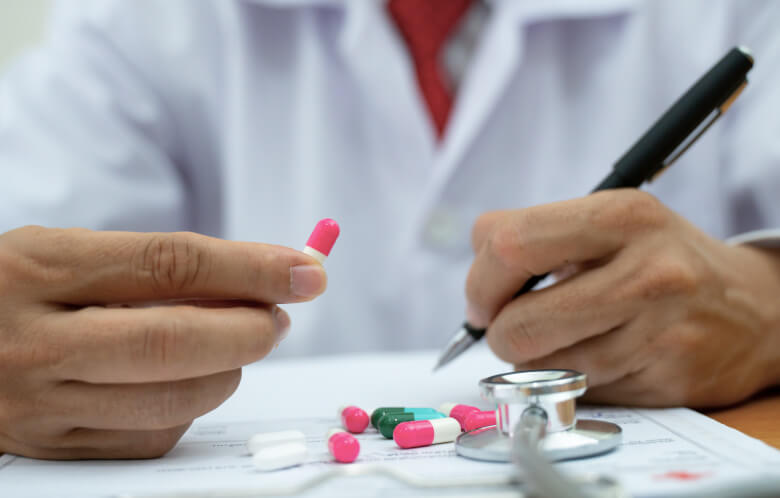Practice Point: Treating COVID-19 with Paxlovid may have benefits, but also seems to increase viral rebound and the period of infectivity.
EBM Pearl: COVID “virologic rebound” may only be a surrogate outcome. Recurrent symptoms, increased infectivity, and potential need for extended isolation are clinically relevant outcomes that matter more.
As COVID-19 continues to circulate (along with influenza and other respiratory viruses), the concept of viral rebound after treatment with nirmatrelvir–ritonavir (Paxlovid) has reared its head. A November article from the Annals of Internal Medicine article found that return of viral positivity and symptoms following treatment with Paxlovid is a common and potentially more clinically relevant outcome than previously thought, mostly in regard to increased infectivity.
The study was an observational cohort of 127 previously vaccinated adults enrolled within five days of COVID-19 diagnosis. Participants were eligible for and were offered Paxlovid and were analyzed according to whether they took the medication (72 adults) or did not (55 adults). The two groups were quite different. The folks who elected to take Paxlovid were older (57 years old vs. 39 years old), had more comorbidities, and were more likely to have been diagnosed with COVID because of symptoms rather than through screening or a history of exposure.
Nobody died during this study (that is so nice to say when we talk about COVID), and the Paxlovid-treated patients generally did better. The primary outcome, however, was virologic rebound within 20 days of the initial positive test, defined by either a positive viral culture after a negative result or sustained elevation in viral load.
The media headlines about this study focused on the authors’ main conclusion that a rebound of COVID occurred about 21 percent of the time in those who received Paxlovid compared to 2 percent in those who did not. When taking a closer look at the study, there are four important points to consider when trying to make sense of this conclusion:
First, the researchers used multiple methods to assess patients, asking them to fill out symptom surveys and obtain repeated nasal swabs during their illness and recovery, and then analyzing those results in different ways. Additionally, they utilized a less common testing method, viral cultures, alongside molecular diagnostics. Although viral cultures are the standard for assessing potential infectivity in research studies, they take days to process and are not routinely available in the clinic. By using viral cultures to supplement molecular testing, the researchers were able to differentiate those patients who had a virus capable of replication, which presumably correlates with potential infectivity. As it turns out, the viral culture was almost four times more sensitive for detecting COVID-19 rebound than was molecular testing.
Second, and not-so-surprising, the study found that many who had a drop in viral load followed by a definable resurgence were actually asymptomatic. We’ve known about this phenomenon. But this study also found that most people who had a rebound of symptoms did not have virologic rebound, and that is a little surprising.
Third, in a subgroup analysis, those that initiated Paxlovid two-five days after symptom onset or a positive result were much less likely to have a viral rebound than those who started therapy on days zero or one (0% vs. 26%). This seems like an important phenomenon to study in a clinical trial, as it could potentially lead to a change in prescribing – waiting two days to begin treatment instead of initiating treatment right away.
Finally, and this is important, for the approximately 20 percent of patients who had viral rebound after taking Paxlovid, their period of infectivity was significantly longer than those who did not take medication. None of them got really sick, but if we can assume that in vitro viral replication (manifested by cytolysis) is the best surrogate marker for infectivity, these patients had about ten more days of contagiousness to others. (See the Kaplan Meiers curves in Figure 3 for the details). On the other hand, none of the patients with a negative molecular test after five days of Paxlovid experienced rebound, and if this finding is replicated, negative molecular testing at five days may eventually allow the 80 percent of people who don’t experience rebound to end isolation.
We can’t really draw many firm conclusions due to the limitations of this small, observational study with significant between-group differences. However, while viral rebound may not pose significant clinical harm to individual patients taking Paxlovid, there may be important public health implications. If the 20 percent rebound risk after taking Paxlovid is true, then the associated prolonged period of infectivity may require recommendations for extended isolation after completing Paxlovid treatment, at least for those who do not have a negative molecular test at day five.
For more information, see the topic COVID-19 Management in DynaMedex.
Reference: Ann Intern Med. 2023 Dec;176(12):1577



